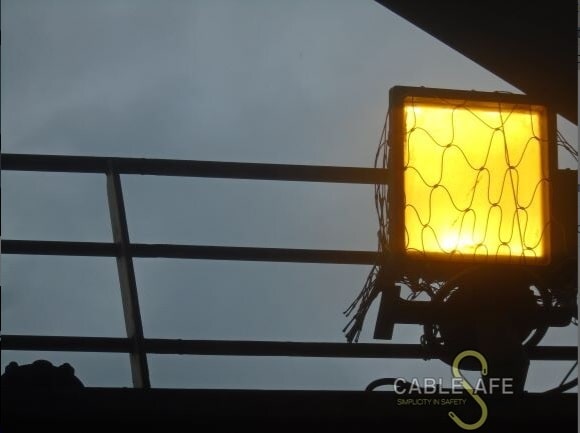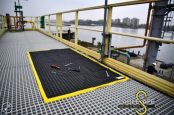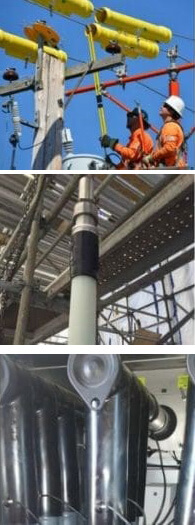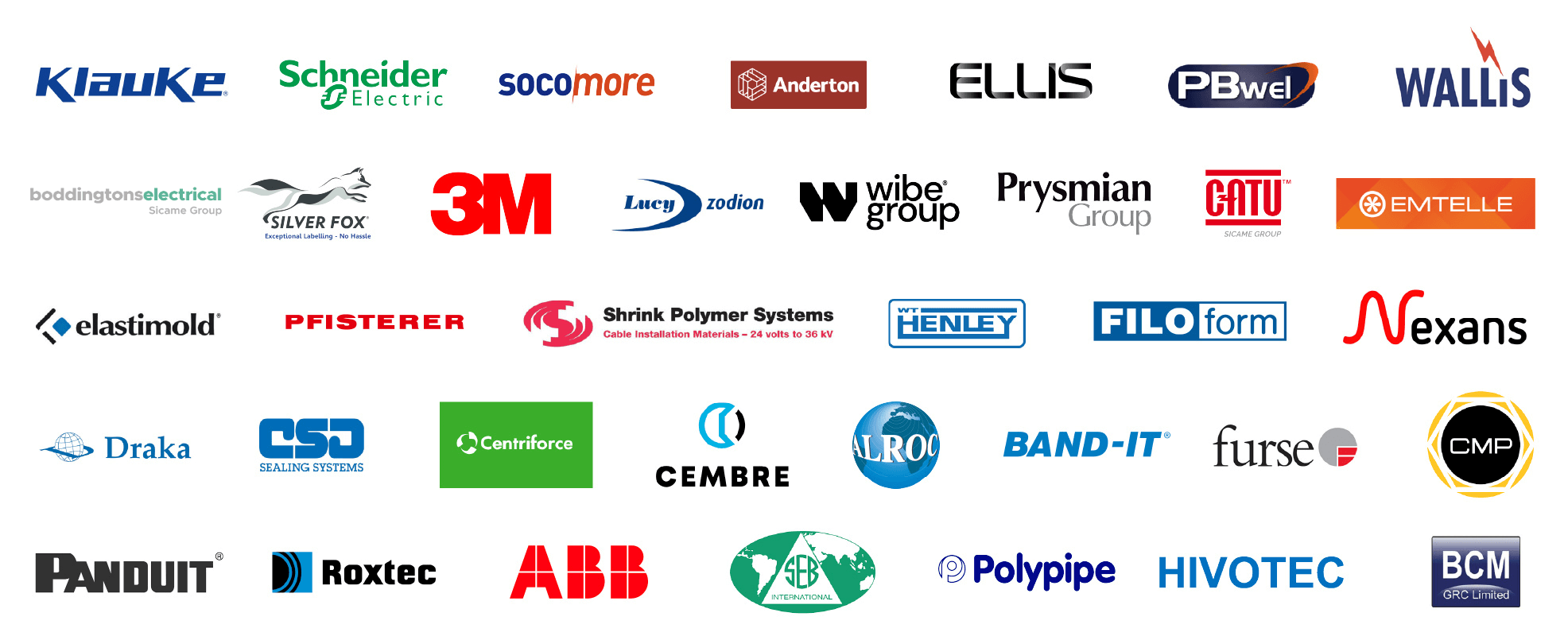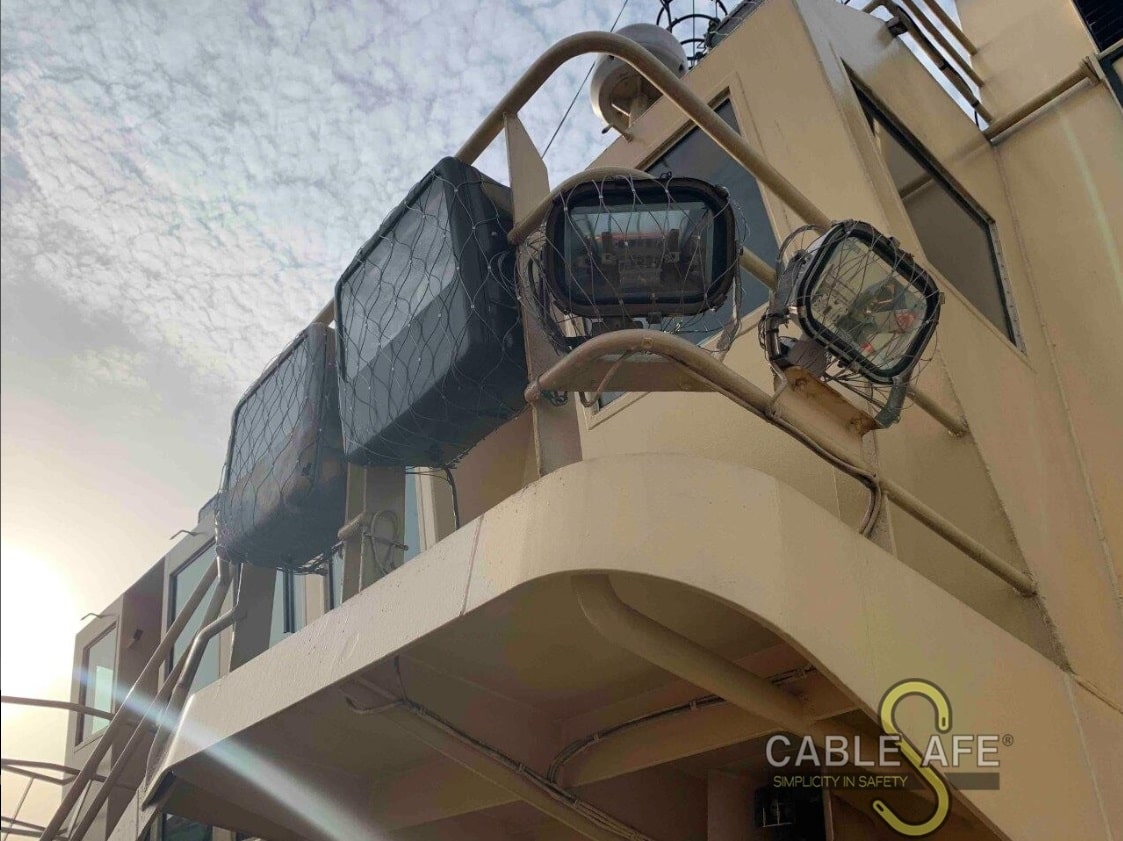
Safety Net Rolls Around Light Fittings
How do you install a safety net?
Proper installation is crucial to ensuring the effectiveness of safety nets. Here are some key steps to follow when installing industrial safety nets:
- Planning and Assessment: Begin by conducting a thorough assessment of the area where the safety net will be installed. Identify potential hazards, determine the required dimensions and strength of the net, and assess the attachment points.
- Preparation: Prepare the area by removing any debris or obstacles that may hinder the installation process. Ensure the attachment points are secure and capable of withstanding the load.
- Net Assembly: Follow the manufacturer’s instructions for assembling the safety net.
- Attachment Points: Depending on the specific installation requirements, safety nets can be attached to existing structures such as beams, walls, or specially designed frames. Ensure the attachment points are robust and capable of supporting the net’s load.
- Tensioning: Proper tensioning is essential to maintain the integrity of the safety net. Carefully adjust the tension to ensure a taut and secure installation. Be mindful of the net’s sag, as excessive sag may reduce its effectiveness.
- Testing and Inspection: Once the safety net is installed, conduct thorough testing to ensure its stability and load-bearing capacity. Regularly inspect the net for any signs of wear, damage, or degradation, and replace or repair as necessary.

Conclusion
Industrial safety nets, particularly stainless steel nets used as dropped objects prevention measures, play a critical role in maintaining a safe work environment. By understanding examples of safety netting, following proper installation procedures, and recognising the purpose of safety netting, industries can effectively mitigate potential hazards and ensure the well-being of their workforce. Implementing these heavy-duty safety measures demonstrates a commitment to safety and provides peace of mind to employees and employers alike.
Remember, when it comes to safety, investing in reliable safety netting is a worthwhile endeavour that pays dividends in accident prevention and overall workplace safety.
FAQ – Dropped Object safety Nets
What Are Safety Nets?
Safety nets for fall protection are generally used at high-rise building construction sites in order to prevent objects from falling on the worksite. These nets are different from oil nets or other safety net systems in that they are a form of secondary protection in case the primary safety fails. We have two options available. One option is a safety net roll, which can be cut and used according to what size is needed. Another option we offer is custom sized nets, which is implemented fast as it requires no modification and is made for the object itself.
What Is Secondary Retention?
Safety Nets Fit-to-size are used for secondary retention. It secures, encloses and tethers overhead fixtures to prevent dropped objects to the work floor when its primary attachment (or installation bracket) fails.
Why Dropped Objects Prevention?
The accidental dropping of tools and equipment poses a safety threat to workers operating at elevated heights. It is therefore important to take precautionary measures to reduce the frequency of such accidents. Tools, equipment and mounted objects in an elevated location have the potential to fall due to movement.
These nets are designed to protect employees from severe injuries in a wide range of working environments. The dropped object prevention safety net will catch the equipment at height when brackets corrode or connections to structure fails (e.g. impact by crane, fatigue, etc). The nets are designed for onshore and offshore installations.
Best practices & recommendations
Portable Equipment
All portable equipment used where there is a risk of the equipment falling to an underlying level must be secured against being dropped
- Carrying pouches must always be used for radios and any other portable equipment without certified securing points
- Locks on pouches must have a double securing mechanism to prevent unintentional opening
- Belt clips that allow equipment to become detached when turned 180º should not be used
- Belts with snap fasteners are not suitable for securing equipment at height
- Battery compartments and covers on portable equipment must be secured to prevent internal components from falling.
Remember even small items falling from significant heights can cause injury and distractions. Ensure all personal equipment (tally books, pens, calipers, cameras, water bottles etc.) is secure in a fastened pocket or carry pouch. If the item is not required for the task, do not carry it at height – leave it at ground level.
Securing Tools >5kg / 11lbs
- All use of heavy tools and hand-held machinery where equipment may fall to an underlying level must be risk assessed
- All heavy tools and hand-held machinery used at height must be secured against being dropped, both when in use and while being transported
- Securing points for tools and machinery must be in place above the work site, attached to the surrounding structure, not to scaffolding
- Tools heavier than 2kg should not be secured to the body, secure them to the adjacent worksite structure
- One piece sledge hammers (forged construction with secured head) should be used at height
- The attachment points / devices on tools shall be documented and all securing wires inspected in accordance with the manufacturers recommendations
- The securing wire must be as short as possible to reduce shock loading effect
- Energy absorbing lanyards and tethers can stretch beyond the safe calculations or drop distance, therefore fixed securing wires should be used on heavy tools at height, according to the work environment
- Only certified lifting equipment shall be used as securing devices (where appropriate)
- Tools used at height should be checked out / in (see Page 54) to ensure that nothing is left behind.
Securing of Personnel
- The choice of equipment to be used must be made after evaluating the work place environment
- Established control procedures must be followed before, during and after use
- Anyone using personal protective equipment against falls from height must have documented training (including rescue method training)
- Nobody shall work alone or unattended when using fall arrest equipment
- Everyone involved in the work scope must have sufficient training and awareness of the equipment and safety procedures
- A ‘Buddy’ check of all fall arrest, rigging and other equipment must be carried out
- The necessary rescue equipment and trained personnel must always be available at the workplace
- Fall arrest equipment must have CE approval, incorporate an anti-trauma safety device and comply with an accepted standard
- The equipment shall be checked EVERY TIME before use and must be checked at least every 6 months by a competent person
- The date for next inspection must be clearly shown on the equipment
- The anchor point for suspension must be rated to 5000 lbs (22kN) – OSHA.

CABLE SAFETY EQUIPMENT
CableSafe® Safety solutions are critical cable essentials and are well proven construction safety products. The CableSafe® range of cable hooks can be used during maintenance, turnaround, outages, shutdowns, construction work to suspend cables and hoses and other work gear and equipment from the working space.
PUSH PULL TOOLING
Thorne & Derrick stock and distribute a range of Safety Tools including Push Pull Tools from Hand Safety Tool Company designed to minimise hand injuries by keeping hands out of the line of fire.





